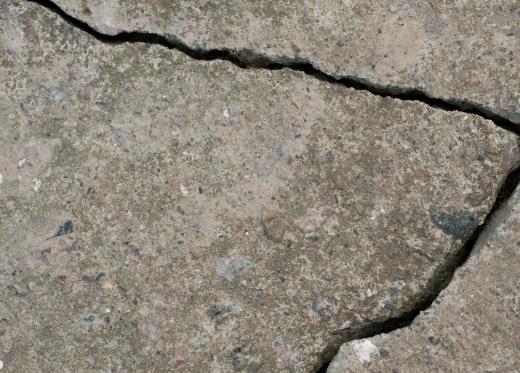Most types of flooring utilize some form of expansion joints in order to minimize the effects of expansion and contraction over time. Expansion joints allow the floor to shift without damage, helping to preserve the appearance and structural integrity of the floor. Most of these joints include some type of joint filler material, which keeps out dirt and debris. Types of joint filler include caulk, rubber or foam inserts, or asphalt.
As temperature and humidity levels change over time, flooring may shift, leading to cracks and other signs of damage. The joint filler serves to reduce the risk of tripping over the expansion joint. This gives the floor a clean, finished appearance.

Different forms of caulk made from latex or silicone are the most common type of joint filler for indoor applications. Caulk is not only affordable and easy to use, but can be used in joints of any size or shape. It's available in many colors and materials to fit the needs of different installers, and can often be painted to match the surrounding surface. One of the primary drawbacks to caulk is its lack of durability. It may dry out and crack over time, or simply deteriorate due to moisture or other factors.
Rubber and foam inserts serve as another popular form of joint filler. They generally come in sheets or rolls that can be cut to size in the field. One of the primary advantages of using foam or rubber is that it's less messy than caulk, and very quick and easy to install. These materials also offer water-resistance and a clean, neat appearance in the finished floor joints.
For joints in industrial areas, or outdoor spaces, installers often turn to asphalt-based materials for their longevity and durability. Many from layers of organic felt saturated with hot tar or asphalt, these joint fillers are particularly popular in concrete patios and walkways. Unlike caulk or foam, asphalt-based joint filler stands up against moisture, chemicals, and a wide variety of other elements. Unfortunately, most asphalt products pose a risk to health and environment because they are derived from fossil fuels. Fumes and runoff from asphalt joint filler may pollute the air as well as local water bodies.
Some expansion joints don't require any joint fillers. The joints used in large concrete applications, such as bridges and roads, generally consist of interlocking metal teeth that flex as they interact. While this type of joint produces a lot of noise, the metal itself serves as the only required filler.
